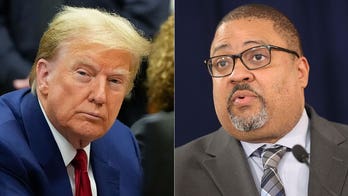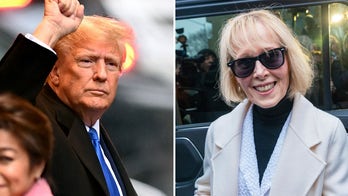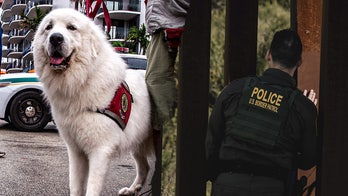
In this photo made Jan. 13, 2010, Rick Westover bends neon tubing for a sign at Glavin Industries in Solon, Ohio. (AP) (AP)
President Obama on Friday hailed a report showing the U.S. economy grew faster than expected at the end of last year, calling it a "stark improvement" compared to the economic decline last year.
"This morning we received a report that affirms our progress and the swift and aggressive actions that made it possible," he said during an appearance at Chesapeake Machine Co. in Baltimore.
But the engine of that growth -- companies replenishing stockpiles -- is likely to weaken as consumers keep a lid on spending.
The 5.7 percent annual growth rate in the fourth quarter was the fastest pace since 2003. The Commerce Department report Friday is the strongest evidence to date that the worst recession since the 1930s ended last year, though an academic panel that dates recessions has yet to declare an end to it.
The White House immediately reacted with cautious praise.
"Today's GDP report is the most positive news to date on the economy," said White House economic adviser Christina Romer.
But she added, "As always, it is important not to read too much into a single report, positive or negative. There will surely be bumps in the road ahead, and we will need to continue to take responsible actions to ensure that the recovery is as smooth and robust as possible."
The two straight quarters of growth followed a record four quarters of decline. Still, the expansion in the fourth quarter was fueled by companies refilling depleted stockpiles, a trend that will eventually fade. Some economists worry that when that happens, the recovery could
Growth exceeded expectations mainly because business spending on equipment and software jumped 13.3 percent -- much more than forecast. It's the second quarter in a row that business spending has increased, after six quarters of decline.
The report provided an upbeat end to an otherwise dismal year: The nation's economy declined 2.4 percent in 2009, the largest drop since 1946. That's the first annual decline since 1991.
Still, economists expect growth to slow this year as companies finish restocking inventories and as government stimulus efforts fade. Many estimate the nation's gross domestic product will grow about 2.5 percent to 3 percent in the current quarter and about 2.5 percent or below this year.
That won't be fast enough to reduce the unemployment rate, now 10 percent. Most analysts expect it to keep rising for several months and remain close to 10 percent through the end of the year.
High unemployment is likely to keep consumers cautious about spending. Without strong consumer spending, economists worry the recovery could falter.
"That's why there's so much hand-wringing right now," said Brian Bethune, chief U.S. financial economist for IHS Global Insight. "Can the economy really sustain this? That's the big question mark sitting out there."
Still, it's a "surprisingly good report," Bethune said, with several factors contributing to growth, including a rapid rise in exports and business investment.
About 60 percent of the fourth quarter's growth resulted from a sharp slowdown in the reduction of inventories as firms began to rebuild stockpiles depleted by the recession.
A shift in the so-called inventory cycle can make a big difference to economic growth, even if overall spending by consumers and businesses grows only modestly. That's because an increase in inventories, or even just a much slower rate of decline, means that companies are producing more goods to fill orders, rather than drawing on their existing stockpiles.
Excluding inventory changes, the economy would have grown at a 2.2 percent clip, the government said. That's an improvement from 1.5 percent in the third quarter.
Besides business spending on equipment and software, also powering growth in the October-December period was consumer spending, which rose 2 percent.
A steep increase in exports also helped boost growth. The shipment of goods overseas rose 18.1 percent, far outpacing a 10.5 percent rise in imports.
Government spending was actually a slight drag on growth in the fourth quarter: A small increase in federal spending was outweighed by a drop in state and local spending.
The Associated Press contributed to this report.




